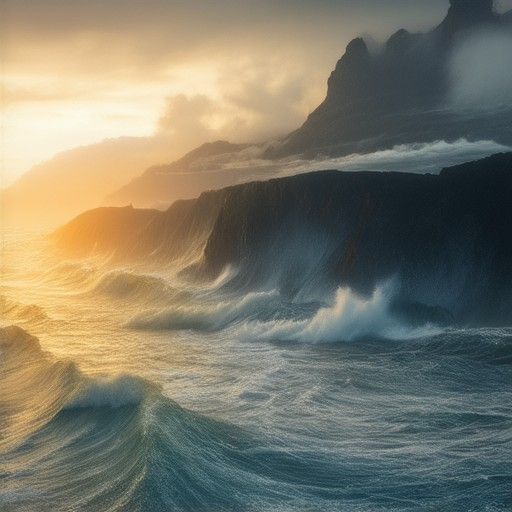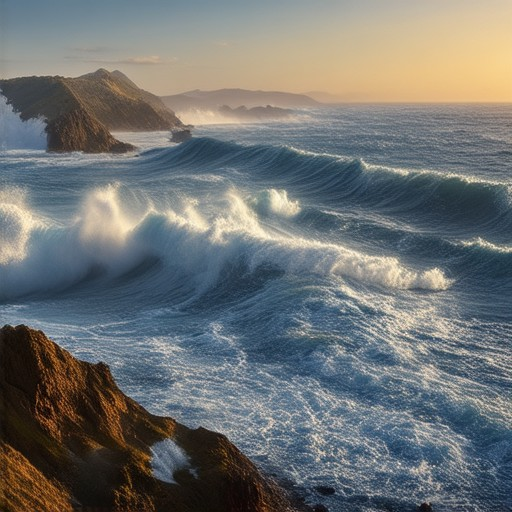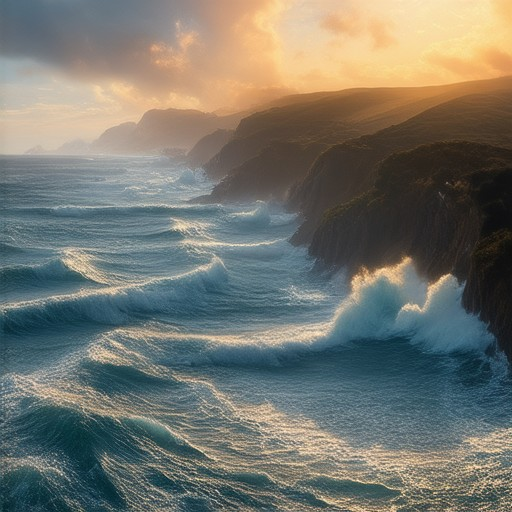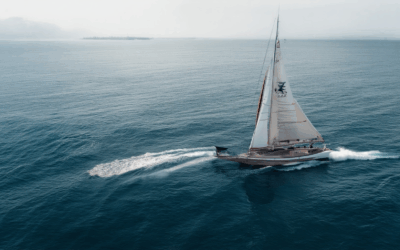Are you eager to master the art of ocean adventure photography? Whether you’re a seasoned photographer or just beginning, capturing the beauty of the ocean requires a blend of technique, creativity, and insider knowledge. In this comprehensive guide, we’ll walk you through expert tips and strategies to help you craft stunning ocean landscapes and waves that will leave everyone in awe. From understanding the fundamentals of photography to mastering long exposures and post-processing tricks, this article is your ultimate resource for unlocking the potential of ocean adventure photography. Dive in and discover how to transform your ocean shots into works of art!
Key Takeaways
– Balance and Harmony: Use the 3×3 grid to place key elements for a balanced composition, creating a harmonious and visually appealing ocean landscape.
– Dynamic Compositions: Break the Rule of 3 intentionally for unique shots, especially during dramatic lighting conditions to add dynamism.
– Depth and Perspective: Apply the Golden Rule by positioning elements one-third from the edge to enhance depth and draw the viewer’s attention.
– Guiding Eye Movement: Incorporate leading lines like horizons or trails to guide the viewer’s gaze, creating movement and depth in your frames.
– Engaging Portraits and Landscapes: Place subjects in the left or right third to avoid a dead-center look, adding interest and depth to your photos.
– Visual Appeal with the Golden Triangle: Combine the Rule of Thirds with the golden triangle to create natural points of interest, resulting in visually balanced and engaging images.

The 5 C’s of Photography
The 5 C’s of photography are essential concepts that every photographer should master to create compelling and visually appealing images. These principles include:
- Composition : The arrangement of elements within the frame to create a balanced and aesthetically pleasing image. Key components include leading lines, rule of thirds, and symmetry.
- Color : The use of color to evoke emotions and establish mood. Effective use of color can enhance storytelling and create visual interest.
- Contrast : The difference between light and dark areas in an image, which helps define shape, texture, and depth.
- Consistency : Ensuring that elements in the image align in terms of style, color, and composition, creating a cohesive overall look.
- Creativity : The ability to think outside the box and experiment with unique ideas and techniques to capture something extraordinary.
By mastering these five elements, photographers can consistently produce high-quality work that engages viewers and communicates their vision effectively.
Best Camera Settings for Ocean Photography
For ocean photography, selecting the right camera settings can greatly impact the quality and mood of your shots. Here’s a breakdown of essential settings:
- Aperture (f-stop)
- Landscape Photography : Use a small aperture like f/8 or f/11 to maximize depth of field. This ensures sharpness across the entire scene, perfect for capturing wave textures and distant subjects.
- Portrait Style Shots : Opt for a wider aperture, such as f/2.8, to blur the background and keep the subject sharp, ideal for beach portraits or close-up shots of swimmers.
- Shutter Speed
- Motion Capture : A slower shutter speed (around 1/10 to 1/30 seconds) can create dynamic, motion-blurred waves, adding drama to your shots. Use a tripod to stabilize the camera during long exposures.
- Freeze Motion : Faster shutter speeds (1/500 to 1/1000 seconds) can freeze the action, perfect for capturing the detail in breaking waves or the spray from a wave.
- ISO Settings
- Low Light Conditions : Increase ISO (100-800) to brighten low-light scenes, such as golden hour or sunset shots. Be mindful of noise levels.
- Bright Conditions : Keep ISO low (100-200) to minimize noise and maintain clarity in well-lit environments.
- White Balance
- Adjust white balance to match the ambient light conditions. Under sunny skies, aim for a slightly cooler tone to reflect the blue hues of the ocean. In shaded areas, warmer tones can enhance the yellow and orange tones of the sand and water.
- Focus
- Manual focus is recommended for precise control, especially when using small apertures or unique compositions. Focus on the point of interest in the frame, whether it’s a surfer, a bird, or a dramatic wave pattern.
- Composition Tips
- Experiment with leading lines, such as incoming waves or the horizon, to create a sense of movement and depth.
- Consider the rule of thirds or golden triangle to frame your subject effectively within the scene.
By mastering these settings and techniques, you can capture the dynamic beauty of the ocean in various lighting conditions and moods. For more insights and tips, explore Sailing Photo Awards and their comprehensive guide on ocean photography.

The 100 Rule in Photography
The 100 rule, also known as the Sunny 16 Rule, is a fundamental guideline in photography that helps photographers achieve proper exposure under various lighting conditions. Here’s a breakdown of how it works:
- ISO Setting : Start by setting your camera’s ISO to 100. This is a standard starting point because it provides a balance between sensitivity and noise levels, allowing for sufficient light capture without excessive graininess.
- Shutter Speed : Set your shutter speed to match your ISO. For an ISO of 100, aim for a shutter speed of approximately 1/100 of a second. This ensures that the sensor receives enough light to create a well-exposed image.
- Aperture : Adjust your aperture to f/16. This setting allows enough light to enter the lens while maintaining sharpness and depth of field. The combination of ISO, shutter speed, and aperture creates a balanced exposure.
By following the 100 rule, you can achieve consistent and professional-looking photos, especially in bright, sunny conditions where the risk of overexposure is high. Experiment with different lighting scenarios to refine your technique and understand how these settings interact in various environments.

What is the Rule of 3 in Landscape Photography?
The Rule of 3 is a fundamental composition technique in photography, particularly useful for landscape photography. Here’s a breakdown of the key aspects:
- Dividing the Scene : The Rule of 3 involves visualizing the photograph as a grid divided into three equal horizontal sections. This creates nine intersection points (a 3×3 grid).
- Placing Subjects : Important elements in the scene, such as peaks, trees, or water reflections, should be placed at these intersection points. This creates balance and visual interest.
- Composition Balance : By aligning key features along these points, the composition becomes more harmonious and visually appealing to viewers.
- Dynamic Compositions : While the Rule of 3 is often emphasized, it’s important to note that breaking the rule can create unique and dynamic compositions, especially in dramatic lighting conditions.
- Practical Application :
- Use a tripod to ensure stability when applying the Rule of 3.
- Experiment with panning shots to capture the full grandeur of landscapes.
For further exploration of landscape photography techniques, visit Sailing Photo Awards , where you’ll find detailed guides and inspiration from expert photographers.
The Golden Rule of Landscape Photography
The golden rule of landscape photography is a fundamental principle that helps create balanced and visually appealing compositions. It involves positioning key elements within the frame according to specific proportions, typically one-third of the way from the edge, to draw the viewer’s attention and enhance the sense of depth and perspective.
Here’s a breakdown of the golden rule:
- Rule of Thirds: Divide the frame into a 9-section grid using two horizontal and two vertical lines. Key elements like horizon, foreground objects, or points of interest should be placed at the intersection points of these lines.
- Leading Lines: Use lines such as roads, rivers, or trails to guide the viewer’s eye through the scene, creating a sense of movement and depth.
- Balance: By placing elements one-third from the edge, the composition achieves visual balance, making the image more harmonious and engaging.
Mastering the golden rule allows photographers to capture scenes that feel naturally beautiful and well-structured. Experiment with this technique in various lighting conditions and compositions to see its transformative effect on your landscape photography.

What is the 1 3 Rule in Photography?
The 1 3 rule in photography, also known as the rule of thirds, is a fundamental composition guideline used to create balanced and visually appealing images. Here’s a breakdown of how it works:
- Understanding the Rule :
The rule of thirds divides the image into three equal horizontal sections. The idea is to position your subject or main visual element within one of these sections, typically the left or right third, leaving the other two-thirds open for background or additional elements. - Why It Works :
The human eye is naturally drawn to the triangular arrangement created by the rule of thirds, making compositions feel more dynamic and interesting. This balance helps guide the viewer’s attention towards the subject while maintaining a sense of harmony in the frame. - Steps to Apply the Rule :
- Identify the Rule of Thirds in Your Scene : Look for the natural division of your image into three horizontal sections.
- Choose the Right Part of the Frame : Position your subject in one of the left or right thirds.
- Compose the Shot : Ensure the leading lines of the frame (like the horizon or foreground) align with the edges of the rule of thirds grid.
- Golden Triangle :
The rule of thirds often pairs well with the golden triangle, another composition principle where the triangle formed by the intersection of the rule of thirds lines creates a natural point of interest. Together, these principles help create visually pleasing and balanced images. - Real-World Applications :
- In portrait photography, placing the subject in the left or right third ensures they are not centered, adding depth and interest.
- For landscapes, the rule of thirds helps frame the scene effectively, emphasizing the main subject while allowing the surroundings to complement it.
- In macro or close-up photography, it aids in isolating details and creating a focused composition.
By mastering the rule of thirds, photographers can consistently create engaging and well-composed images that capture attention and tell a story.



0 Comments